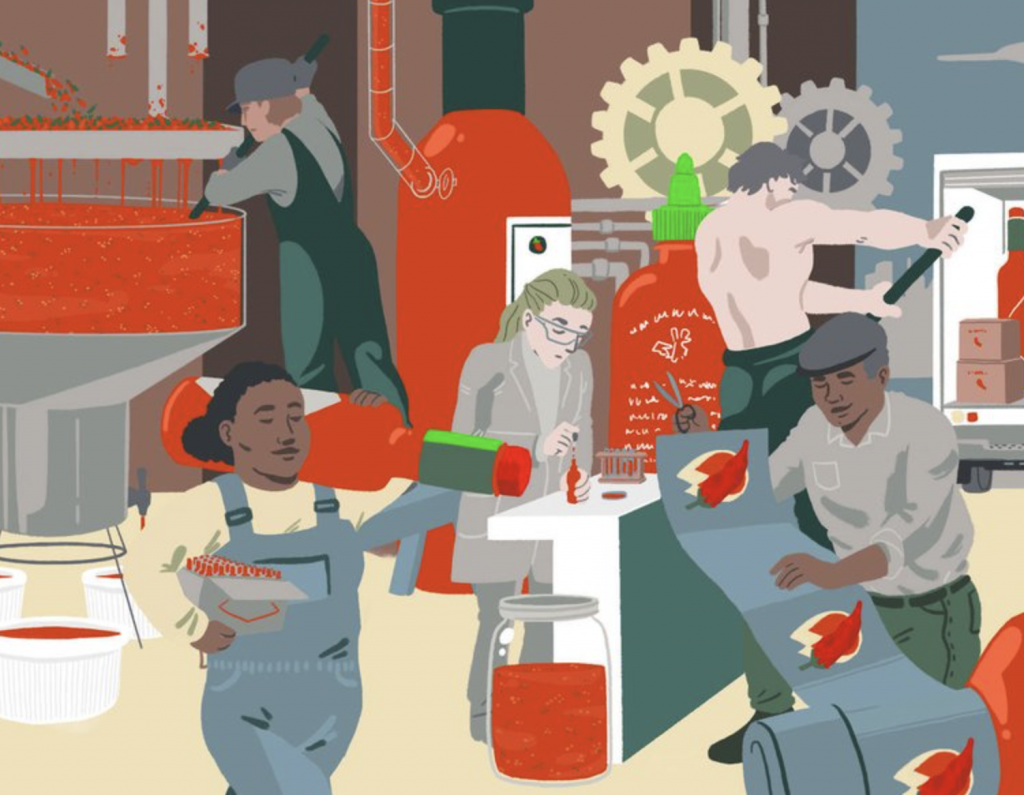By Matt Gross

Once upon a time, in 1830s New York City, a woman named Jane McCollick noticed a barefoot 11-year-old selling newspapers at Washington Market. McCollick had an idea for the “plucky young waif”: He should offer to clean up the meat scraps from the butchers and sell them to Indians in Hoboken. The kid, whose name was Seaman Lichtenstein, took her up on it and made one dollar the first day. He soon became McCollick’s ward, boarding with her, studying at night school, teaching her the bookkeeping tricks he learned, and eventually investing $600 in her food business.
With Lichtenstein as a partner, J. McCollick & Co. grew to become a manufacturer of—as one 1860 newspaper ad put it—“Pickles, Preserves, Sauces, Jellies, Jams, Catsups, Syrups &c.” Among those sauces was a hot sauce, technically a “bird pepper” sauce, likely made from chiltepins and sold in a hexagonal glass bottle. This wasn’t just any sauce, though—it’s the one of the oldest commercial hot sauces in America, and probably the oldest for which bottles (empty, sadly) still exist.
Today, this country is awash in hot sauce. From sea to shining sea, fiery condiments crown our every meal, transforming workaday eggs, chicken wings, and noodle dishes into incendiary delights. It seems like there’s always a new hot sauce debuting at a farmers’ market or Whole Foods, made from famous or obscure chili peppers. Those racks and racks of bottles fuel an industry that’s currently valued at $1.5 billion—and growing fast.
It was not, however, always this way. Cast your palate back just over a decade, and Sriracha, the so-called “rooster sauce” from California-based Huy Fong Foods, was still a niche player. Go back another decade or so, and you might not have tried anything fancier than Tabasco. In fact, the whole history of hot sauce in the United States isn’t much more than 200 years old—which is kind of odd, considering that people have been eating chili peppers for thousands of years. Here’s how it all went down.
To read entire article, click HERE
